Why are the batteries taking a long time to recharge on my Panasonic SL-CT710 CD Player?
- DDaniel PerkinsSep 3, 2025
If your Panasonic CD Player is taking a long time to recharge, it can take up to 6 hours under certain conditions.

Why are the batteries taking a long time to recharge on my Panasonic SL-CT710 CD Player?
If your Panasonic CD Player is taking a long time to recharge, it can take up to 6 hours under certain conditions.
Why doesn't my Panasonic SL-CT710 CD Player resume play from the last point?
If your Panasonic CD Player doesn't resume play from the last point stopped, this feature won't work if you change discs or during random play. It also may not work correctly under some other conditions.
Why doesn’t my Panasonic CD Player start from the first track?
If your Panasonic CD Player doesn’t start play from the first track, random play modes might be activated. Play also resumes from the last point stopped.
Why does the battery indicator fail to appear on my Panasonic CD Player?
If the battery indicator fails to appear or is incorrect on your Panasonic CD Player, note that the indicator does not appear when the AC adapter is connected, and it may not appear correctly under certain other conditions.
How to change the Digital Re-master mode on Panasonic SL-CT710 CD Player?
You cannot change the Digital Re-master mode on your Panasonic CD Player when selecting a track; it can only be changed while stopped.
Why doesn't Digital Re-master work on my Panasonic CD Player?
If the Digital Re-master feature on your Panasonic CD Player isn't working, the effect may not be noticeable depending on the type of MP3 disc recording.
| Type | Portable CD Player |
|---|---|
| Disc Capacity | 1 |
| Playback Formats | CD, CD-R, CD-RW |
| Frequency Response | 20 Hz - 20 kHz |
| Signal-to-Noise Ratio | 90 dB |
| Power Source | 2 x AA batteries or AC adapter |
Explains compatibility with CD-R and CD-RW discs for MP3 and CD-DA formats.
Allows playback to resume from the last stopped point after interruption.
The unit automatically turns off after approximately 10 minutes of inactivity in stop mode.
Buttons light up in different ways when HOLD is released; can be turned off.
The remote control display light activates upon button press for about 5 seconds.
Addresses issues like HOLD function, empty batteries, or incorrect disc settings causing no playback.
Covers checking connections, mobile phone interference, or poor MP3 recording quality.
Explains why the resume function might not work, such as changing discs or random play modes.
Addresses random play modes potentially affecting playback start.
Notes that searching through MP3 files or changing modes can affect track search functionality.
Explains that specific button presses are required before changing modes like EQ or anti-skip.
States that skipping between first and last albums is not possible during play.
Suggests checking if the operation tone feature is turned off on the unit.
Recommends using only the included remote control for proper operation.
Lists reasons for recharge failure, including incorrect battery type or unit not being off.
Assures that the AC adaptor warming up during recharging is normal.
Explains that recharge times can vary, especially for new or unused batteries.
Suggests that play time may improve after a few recharge cycles for batteries.
Advises reconnecting power sources if the battery indicator is not functioning correctly.
Recommends disconnecting and reconnecting all power sources (batteries and AC adaptor) to reset.
Indicates that the HOLD function is active, preventing button presses.
Shows when no disc is inserted or the inserted disc is unreadable.
Indicates that the disc lid is open.
Shows that the batteries are currently recharging; disappears when complete.
Advises discontinuing use if skin irritation or allergic reactions occur from contact.
Details safe handling, insertion, disposal, and charging of batteries.
Provides advice on safe listening volumes to prevent hearing damage and hazards.
Lists precautions for using CDs, including avoiding irregular shapes and improper labeling.
Emphasizes reading all operating and safety instructions before use.
Advises keeping the operating instructions handy for future reference.
Stresses the importance of following all warnings provided with the unit.
Reinforces the need to adhere to all operating and safety guidelines.
Warns against using the apparatus near water to prevent damage or shock.
Specifies cleaning the unit only with a dry cloth.
Advises against blocking ventilation openings for proper operation and heat dissipation.
Warns against installing the unit near heat-generating sources like radiators.
Explains the importance of not defeating the polarized or grounding plug for user safety.
Advises protecting the power cord from damage by being walked on or pinched.
Stresses using only manufacturer-specified attachments and accessories.
Recommends using only manufacturer-specified carts, stands, or tables for safe placement.
Advises unplugging the unit during lightning storms or prolonged periods of non-use.
States that all servicing must be performed by qualified personnel.
Warns against exposing the apparatus to rain, moisture, or liquids to prevent fire or shock.
Warns about laser radiation exposure and prohibits self-servicing; refers to qualified personnel.
Specifies using only the designated car adaptor model for safe operation.
States compliance with FCC Part 15 for Class B digital devices to prevent interference.
Lists conditions under which the unit requires servicing by qualified personnel.
Prohibits self-servicing beyond what is detailed in the manual; refers to authorized personnel.
Mandates using manufacturer-specified parts for replacements to ensure safety and performance.
Requires a safety check by the servicer after repairs to confirm proper working condition.
Provides contact details for product information and operational assistance in the U.S.A. and Puerto Rico.
Outlines the warranty period for products and rechargeable batteries.
Details what is not covered by the warranty, such as accidental damage or normal wear.
Informs users on how to purchase replacement parts and accessories online or via mail.
Identifies and describes the location and function of buttons on the main unit.
Explains how to connect the unit to an external battery case for power.
Details connecting the AC adaptor or car power adaptor to the DC IN jack.
Describes connecting the remote control to the main unit.
Explains connecting the unit to an audio system using an audio cable.
Lists all accessories included in the product packaging.
Suggests specific nickel-metal hydride batteries for optimal performance.
Lists technical specifications for CD-DA audio playback.
Details technical specifications related to MP3 file playback.
Provides approximate play times for different battery types and disc formats.
States the approximate time required to fully recharge the batteries.
Lists general power supply, consumption, and operating conditions.
Specifies the weight of the unit with and without batteries.
Instructions for charging the rechargeable batteries before initial use.
Explains how to insert and use dry cell batteries in the unit or external case.
Describes the illumination indicators during battery recharging.
Indicates when recharging is finished and the illumination goes out.
Recommends unplugging the AC adaptor when not in use to save power.
Mentions combining battery types for longer play and potential reductions with CD-RW.
Explains how the battery indicator functions while the unit is on and off.
Step-by-step guide on inserting a CD and starting playback.
Explains how to pause and resume playback using the main unit.
Details how to search forward or backward within a track during playback.
Describes how to skip to the next or previous track.
Explains how to stop playback and turn off the unit using different methods.
Instructions on how to register and play tracks in a custom sequence.
Explains how to adjust sound quality settings like S-XBS and EQ OFF.
Describes various playback modes such as Repeat, Random, and AB Repeat.
Details the anti-skip system and its memory settings for CD-DA and MP3.
Covers turning off operation tones and adjusting display contrast via remote.
Guides on starting MP3 playback from albums and selecting tracks.
Explains how Digital Re-master enhances sound quality by restoring lost frequencies.
Provides recommendations for naming files and folders for MP3 discs.
Lists limitations and compatibility issues when playing MP3 files.
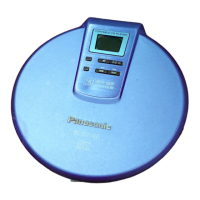

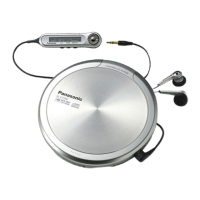
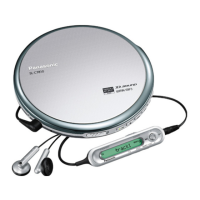
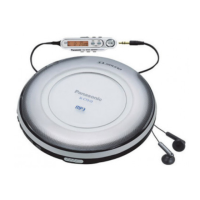
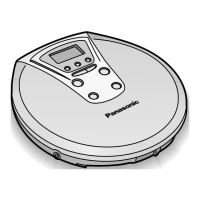
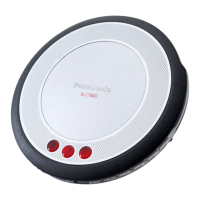
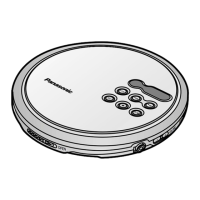
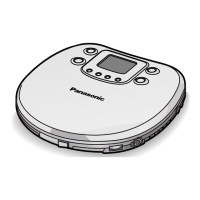
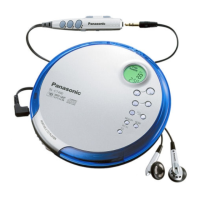

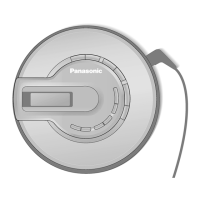
